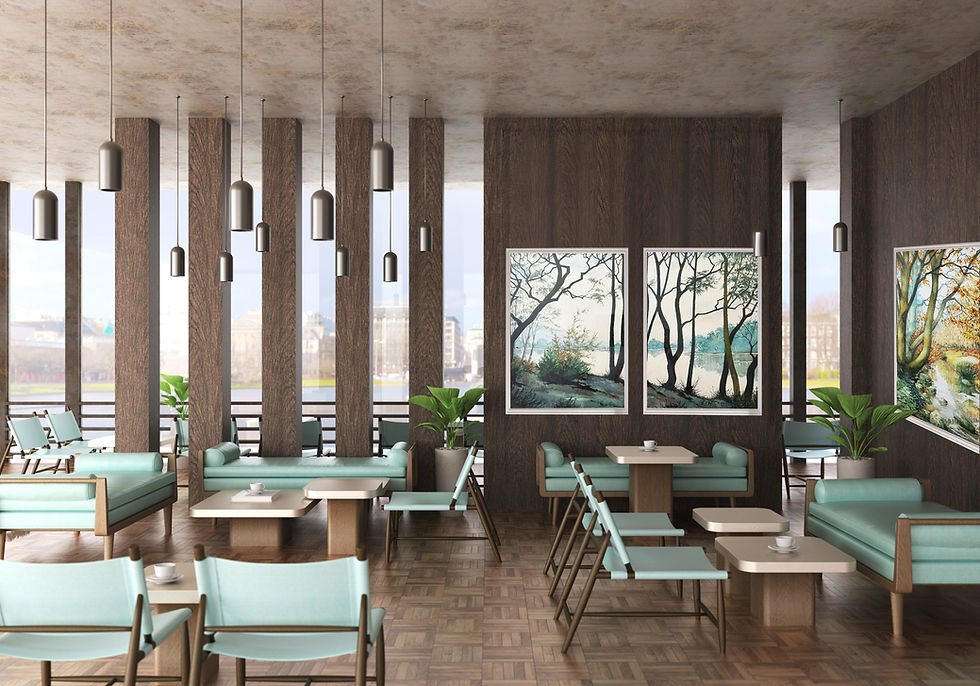Acoustipics – Enhancing the Classroom Experience
- joannahelin6
- Oct 28
- 2 min read
Combining Aesthetics and Functionality for Improved Learning Environments
Introduction
Lecture halls, classrooms and lecture theatres face a unique set of challenges. With the increasing number of distractions available to students, the need for effective communication and engagement in learning environments is more important than ever. Educators and institutions are seeking innovative solutions to create environments to support learning and motivate students. One such solution gaining traction is the use of pictures offering acoustic control with customisable designs. This article explores how these functional yet artistic installations can enhance classroom and lecture session experiences.
Acoustic Control in Educational Settings
Acoustic control refers to the management of sound within a space to reduce noise, minimise reverberation, and improve speech intelligibility. In classrooms, poor acoustics reduce clarity making it more difficult to hear the lecturer, thereby reducing student participation. Acoustic issues may be helped with soft furnishings, heavy curtains or plain acoustic panels, but these can lack aesthetic appeal or flexibility.
The Innovation: Acoustic Control Pictures
Acoustipics acoustic control pictures combine sound-absorbing materials with customisable visual designs and fire-retardant properties. Unlike plain acoustic panels, Acoustipics can be customised with motivational imagery, course relevant content or even student artwork. This personalisation boosts motivation without compromising on sound management.
Benefits of Acoustipics Customisable Acoustic Control Pictures
1. Improved Speech Clarity - by absorbing excess noise and reducing echo, Acoustipics help students hear every word clearly, irrespective of their seating position. This is especially important in larger lecture halls, classrooms with a lot of glass or shiny or hard surfaces that tend to reflect sound.
2. Enhanced Concentration and Participation - when background noise is minimised, students are less likely to be distracted. A quieter environment fosters better focus, encourages questions, and supports more active classroom discussions.
3. Customisable Design for Greater Engagement - the visual aspect of Acoustipics allows educators to create stimulating and welcoming learning spaces. Walls adorned with inspirational quotes, subject-specific images, or school branding can boost morale and create a sense of belonging.
4. Flexible and Adaptive Use – Acoustipics are easy to put up and take down, combined with their customisable design they can be updated to reflect changes in curriculum, celebrate achievements, or highlight important school events, keeping the learning environment fresh and relevant.
5. Promoting Well-Being - thoughtfully designed spaces which are both visually appealing and acoustically comfortable contribute to the overall well-being of students and staff. Calm, inviting classrooms reduce stress and create a positive atmosphere for learning.
Practical Considerations
When considering the implementation of acoustic control pictures, schools should assess the room’s size, typical noise levels, and the existing décor. Installation is often straightforward, and maintenance is minimal, making this an attractive option for both new builds and retrofitting older classrooms.
Conclusion
Acoustipics, which offer acoustic control, customisable design and which are fire-retardant provide a smart, multifunctional solution for modern learning environments. By combining effective sound management with the power of visual design, they help create classrooms that are not only acoustically optimised but also inspiring and adaptive to the needs of educators and students alike. As educational spaces continue to evolve, embracing such innovative approaches will be key to enhancing both teaching and learning outcomes.





